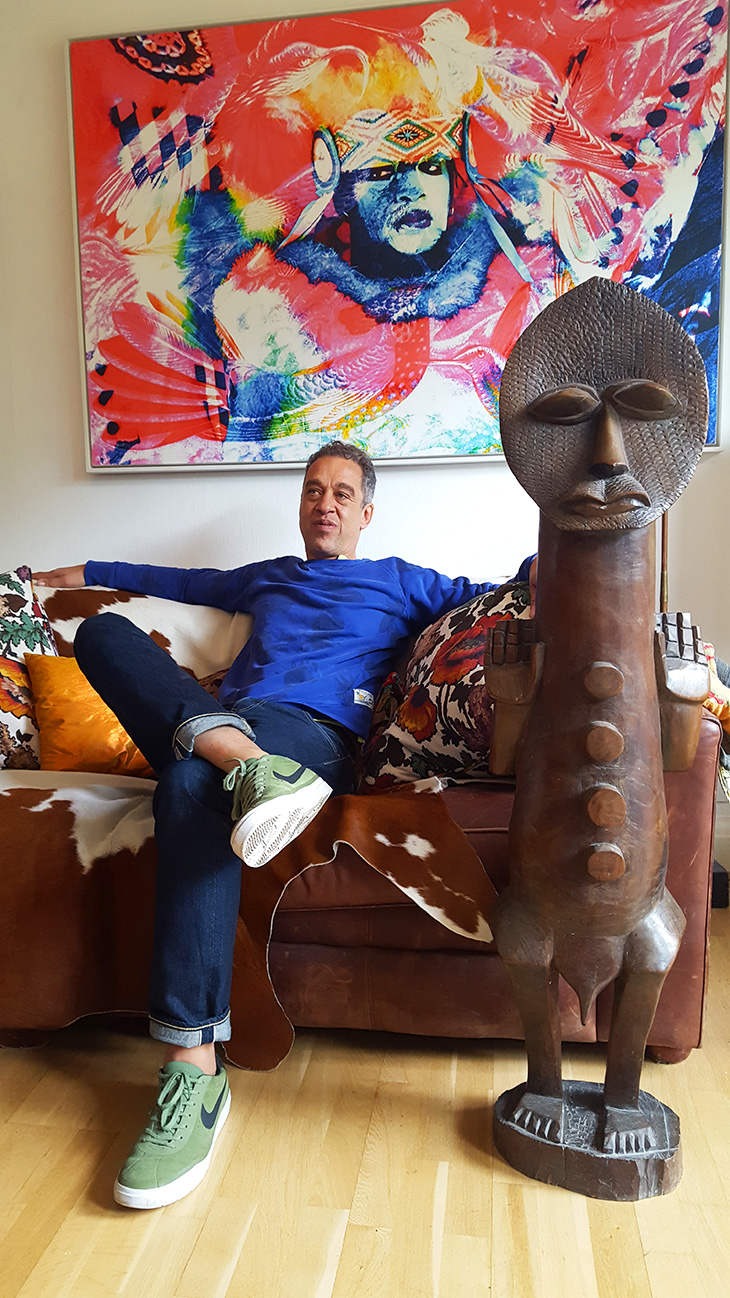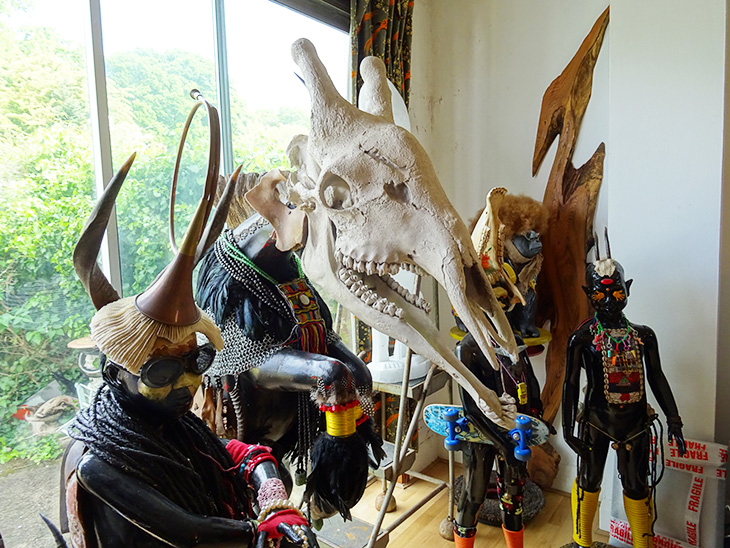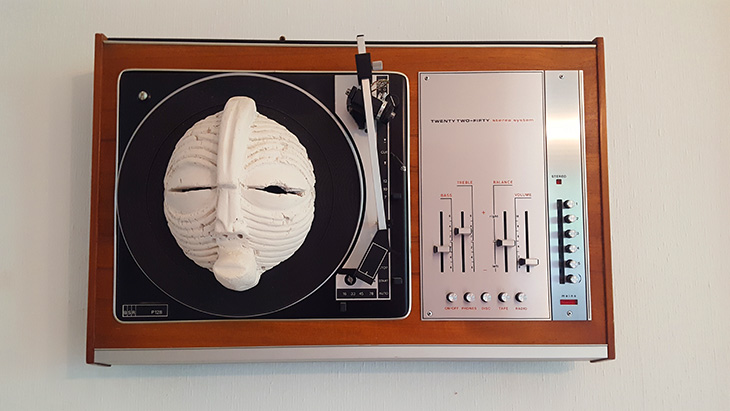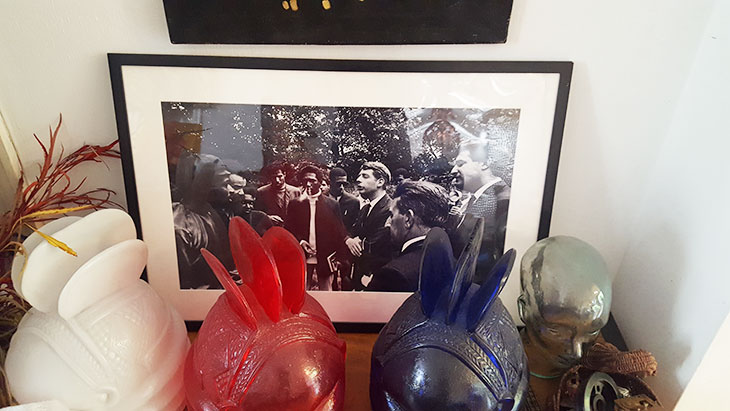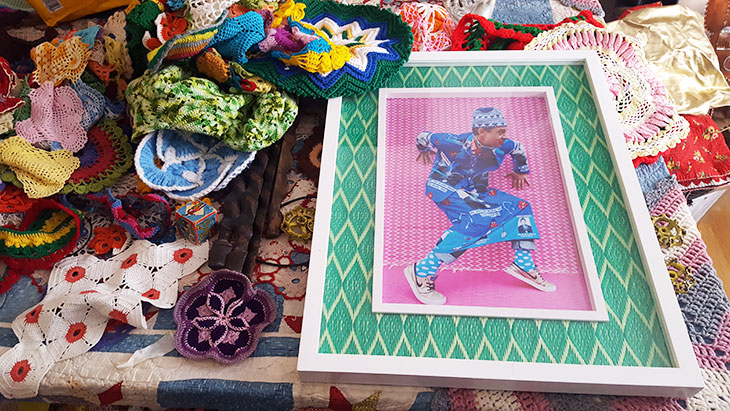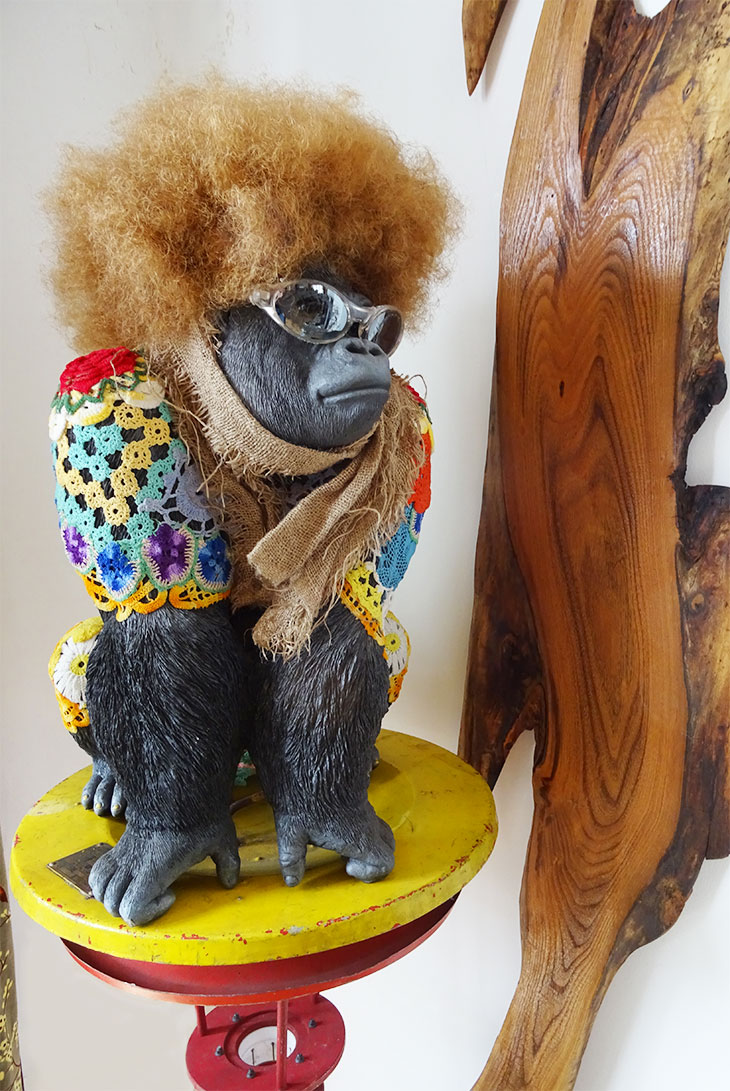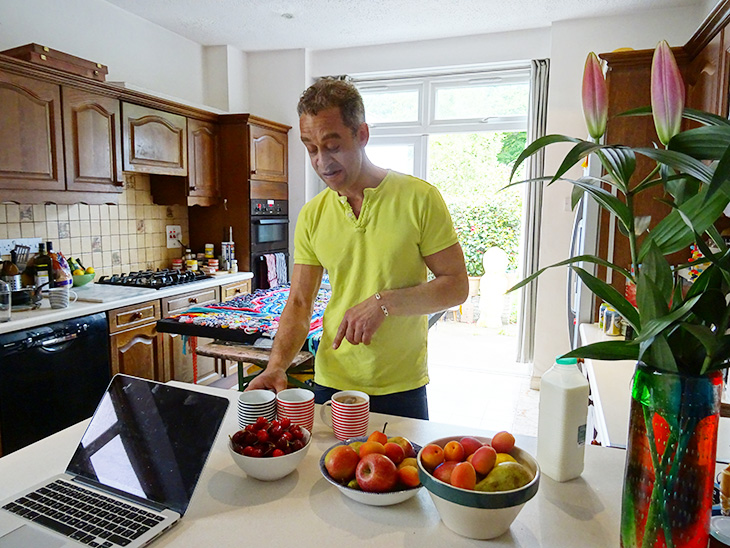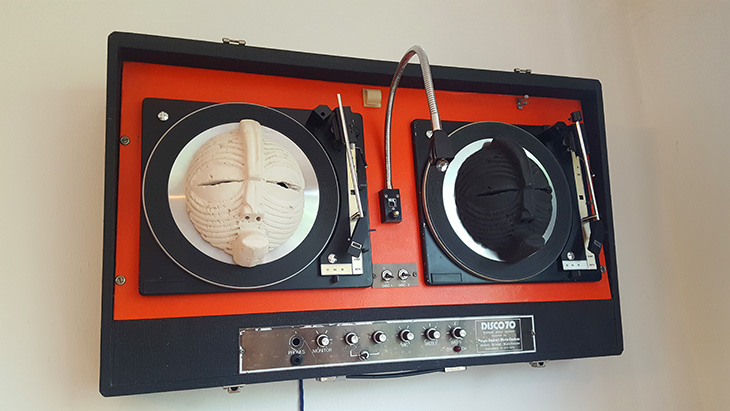If you saw Zak Ové’s Masque of Blackness – an army of statuesque, graphite, African ‘Invisible Men’ on plinths at Somerset House during the 1:54 Contemporary African Art Fair last year – you won’t have forgotten it. In fact you probably have a selfie. The statues held court like giant chess pawns in the vast entrance of the British institution, and it was honestly one of the most amazing things I had ever seen. Definitely Instagram worthy.
Zak has established his career in the contemporary art world over the last 15 years by working in film, sculpture and photography. Showing internationally, his works have part of prestigious fairs such as Art Basel and the Venice Biennale.
Although he is most certainly an original and proud north-west ‘London Boi’, his works reflect both his Trinidadian and British upbringing as well as paying tribute to African cultural and spiritual identity.
This is evident in his home. It is an explosion of colours, statues, installations and photography; a combination of the vibrancy and richness of the continent and its diaspora with a touch of British history.
There is nothing quite like stepping into the personal space of an artist. It is very much like being allowed to enter their private mind and see the way their mind works.
Beautiful, bold pieces hang from his walls in every single room and it feels like you’ve stepped into a wonderland where you find all sorts of artistic surprises: adapted turntables a la Ové with masked faces, animal skulls, Invisible Men scattered about, spray paint cans, photographs of his past life, works by his father, lobsters, chickens and various animals, spiritual artefacts, animal skin rugs, black dolls, skateboards, a Hassan Hajjaj piece or two – welcome to the House of Ové!
‘Would you like to ask me a question then?’ he asks as I explore – the British directness kicks in. So, we begin and chat about his life as a young boy living in Camden during the ’70s as I ask how he got into art.
I was very lucky to grow up through a streamline of situations, people and places that put me in the direction leading me to where I’m at
Zak is the son of Black-British filmmaker Horace Ové and worked as his assistant for years. You can tell that Zak is very proud of his father. Horace Ové immigrated to Britain in the 1960s, a point at which many West Indians were moving over. His father was one of the few people responsible for documenting what it felt to be black in Britain, going beyond his own experience as a Caribbean immigrant. He worked with some of the greats of the time such as American novelist and social critic James Baldwin, black filmmakers and even with the BBC for the documentary he directed, Skateboard Kings in 1978.
‘I was very lucky to grow up through a streamline of situations, people and places that put me in the direction leading me to where I’m at,’ says Zak.
Being a complete ‘fangirl’, I am very aware of Zak’s close relationship to another one of my favourite artists – Hassan Hajjaj. I eagerly ask him about his friendship with ‘The Andy Warhol of Marrakech’ and what it was like growing up as part of their Camden kids creative clique.
‘I met Hassan in my teens’, Zak explains. ‘I knew Hassan from Camden a lot because he used to sell flowers and my mum had her clothes shop round the corner. When I started studying at St Martin’s in Long Acre, Hassan had a shop round the corner in Neal Street (Covent Garden). We became really tight from that time. Much later on, he rented my mum’s shop in Camden after she passed away and he had a Moroccan tea room while I lived upstairs.’
Zak reminisces about the good old days as he sips his coffee: a world of film, music, art, colour and culture. He made the move from filming music videos to being a fully fledged artist around 2000 after a trip to Trinidad in order to film and photograph carnival.
‘I was interested in the mythologies and stories that had run traditionally through the old masquerade. It is a collection of stories around characters that different bands of people play. For example, those who played like a sailor or midnight robber, usually became attached to a character like that forever and each carnival played was a new rendition of that character, like a new episode of yourself. You became attached to this alter ego’
If you don’t stand up for your own culture, in the end you become secondary car park attendants in a back lot to the Americas.
Having grown up between Europe and the Caribbean, he identified with the push and pull between the two cultures.
‘There is an incredible resistance art that takes place … The Caribbean were resisting the tides of change that was being enforced from other countries, for example the United States. If you don’t stand up for your own culture, in the end you become secondary car park attendants in a back lot to the Americas.’
The cultural imperialist movement from across the seas has influenced many aspects of black art, music, tradition and life. So it remains critical that art and old world African traditions continue to define culture – and that new materials and new technologies allow artists to, as Zak Ové says, ‘develop a nuance in the language that keeps that timeline alive.
‘If I can use plastics or polyurethane in transition between African sculpture-making and ebony wood, suddenly you are modernising a moment,’ he says about the Masque of Blackness. He took a small, African sculpture, carved in ebony wood, and upscaled it in graphite, multiplying it 40 times (at Somerset House ) and 80 times (at Yorkshire Sculpture Park). It is Ové’s way of questioning what it is to be an African, born abroad, while keeping your sense of self-identity alive – the graphite signifying a future world of black people.
We see black men in a certain light, and we put this story on them, compartmentalising them which is a mistake.
Zak quotes the American literary critic and scholar Ralph Ellison, best known for his novel Invisible Man, winner of the National Book Award in 1953: ‘We see black men in a certain light, and we put this story on them, compartmentalising them which is a mistake. Because he may not be the person we imagine him to be.’
African art risks being compartmentalised too. Many ignore the internationalism and multiculturalism of the continent and how its art has united and taken influence from so many different cultures.
Zak Ové is fascinated by identity, stories of migration, integration, and bringing people together. He was commissioned by the British Museum to make two pieces of work that spoke about the relationship between the Caribbean and Africa. He chose the mythological characters Moko Jumbie – Caribbean, African deities that protect people. Legend says that during slavery they accompanied the captives in ships to protect the people who would then become Caribbeans.
‘I like the full circle of it,’ Zak continues. ‘Now they are back in the UK, sitting in the British Museum opposite traditional African masks. The Caribbean masquerades are together with the great masquerades of Africa.’
He is part of a movement that allows African and diaspora art to take a seat at the table: ‘I’m a 50-something year old black artist, right, and I’ve grown up through an era where we have had to create and fill in all these blanks and missing spaces, where we didn’t exist. So how do we imagine a better future and a better world? We must use our art work to enhance that.
‘One of the things that has always been important to me, wasn’t just to take influence from great black artists, but was to actually take the baton. To wear a cape, to stand on a little box, and be counted.’
Zak Ové’s ‘Black and Blue: The Invisible Man and the Masque of Blackness (2016-17)’ is currently on display at Yorkshire Sculpture Park as part of a series of new open-air displays celebrating the 40th anniversary of the Park.
All artwork © Zak Ové
Header image © Ansell Cizic

